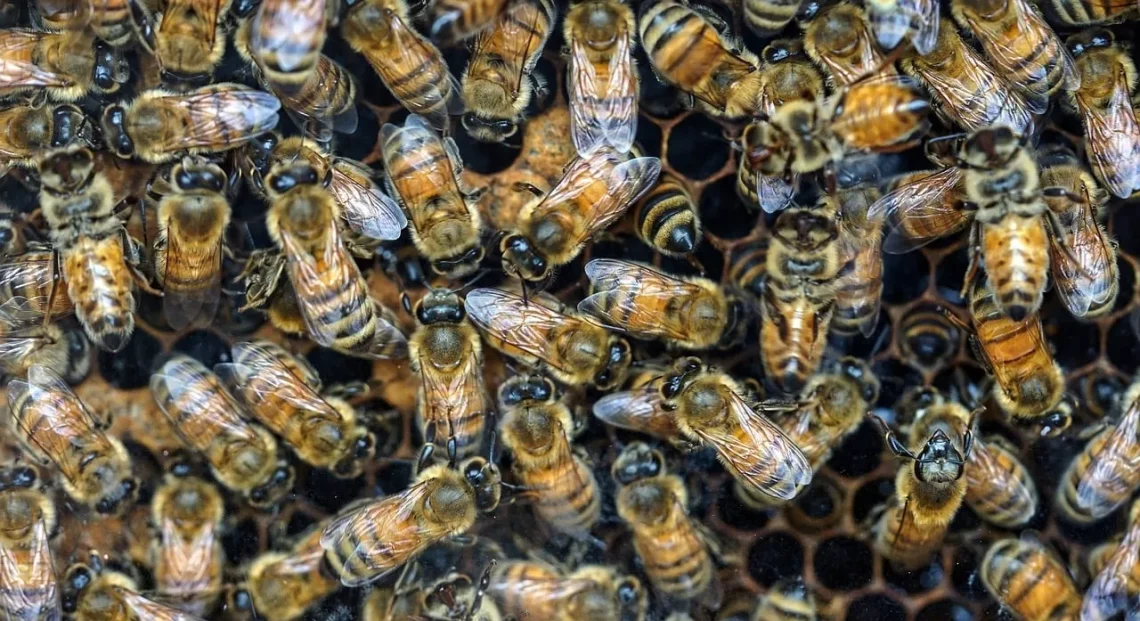
What Kills Bees Instantly: Top Threats to Their Survival
Bees play an essential role in our ecosystem, serving as vital pollinators for a vast array of plants. Their work not only supports biodiversity but also underpins global food production. Unfortunately, these industrious insects face numerous threats that can lead to their rapid decline. Factors such as habitat loss, climate change, and pesticide exposure are increasingly jeopardizing their survival. As we delve into the various dangers that bees encounter, it becomes apparent that urgent action is needed to protect these crucial members of our environment. Understanding the specific elements that contribute to their decline can help us develop more effective conservation strategies. The plight of bees is not just a matter of ecological concern; it is a reflection of the health of our planet and the sustainability of our agricultural systems. As we explore the myriad factors affecting bee populations, we shine a light on the interconnectedness of life and the importance of preserving the delicate balance of nature. The time to act is now, for the survival of bees is inextricably linked to our own well-being.
Pesticides: A Silent Killer
Pesticides are one of the most significant threats to bee populations worldwide. These chemicals are widely used in agriculture to combat pests and diseases that affect crops. However, many pesticides are highly toxic to bees and other pollinators, leading to immediate and long-term detrimental effects.
Neonicotinoids, a class of systemic pesticides, are particularly harmful. They affect the central nervous system of insects, causing disorientation, impaired foraging abilities, and ultimately, death. Studies have shown that even low doses of neonicotinoids can have sub-lethal effects, disrupting the bees’ ability to navigate and communicate, which are crucial for their survival and hive productivity.
In addition to direct toxicity, pesticides can also weaken bee immune systems, making them more susceptible to diseases and parasites. When bees are exposed to multiple stressors, such as poor nutrition and habitat loss, the impact of pesticides can be compounded, leading to significant population declines.
The use of pesticides is not limited to agricultural settings. Homeowners and landscapers often apply these chemicals to maintain gardens and lawns, inadvertently harming local bee populations. As awareness of the dangers of pesticides grows, many advocates are pushing for more stringent regulations and the promotion of organic farming practices that minimize or eliminate pesticide use.
To protect bees, consumers can opt for organic produce when possible and support farmers who implement bee-friendly practices. Additionally, creating awareness about the importance of pollinators and advocating for policy changes can contribute to reducing pesticide usage in both agricultural and urban settings.
Habitat Loss and Urbanization
Habitat loss is another critical factor contributing to the decline of bee populations. As urban areas expand and agricultural practices intensify, natural habitats are destroyed or fragmented. This loss of habitat limits the availability of food sources and nesting sites for bees, putting immense pressure on their survival.
Bees rely on a diverse range of flowers for nectar and pollen. When landscapes are converted into monoculture farms or urban developments, the diversity of plants is significantly reduced. This lack of diversity can lead to nutritional deficiencies, as bees may not find the variety of food they need to thrive. Additionally, the fragmentation of habitats can isolate bee populations, making it challenging for them to find mates and establish new colonies.
Urbanization poses unique challenges and opportunities for bee conservation. While cities often lack the natural habitats that bees require, they can also provide new spaces for pollinator-friendly initiatives. Community gardens, green roofs, and pollinator pathways can all help to create habitats for bees in urban environments. Encouraging local governments and organizations to incorporate bee-friendly practices into city planning is crucial for enhancing urban biodiversity.
Moreover, educating the public about the importance of native plants and sustainable gardening practices can foster a more supportive environment for bees. Planting native flowering plants that bloom at different times throughout the year can provide a continuous food source for bees, contributing to their overall health and resilience.
In summary, addressing habitat loss through conservation efforts and urban planning is essential for protecting bee populations. By creating and preserving diverse habitats, we can support the survival of these vital pollinators.
Climate Change and Its Impact
Climate change is a looming threat that exacerbates many of the challenges bees face. Rising temperatures, altered rainfall patterns, and extreme weather events can disrupt the delicate balance of ecosystems. These changes can have profound effects on bee behavior, health, and distribution.
One of the most significant impacts of climate change is the shift in flowering times of plants. Many flowering plants are blooming earlier due to warmer temperatures, while bees may not adjust their foraging patterns accordingly. This misalignment can lead to food shortages for bees during critical periods, ultimately affecting their ability to reproduce and sustain their colonies.
Furthermore, climate change can influence the geographic range of bee populations. Some species may struggle to adapt to changing conditions, leading to local extinctions. In contrast, other species may thrive in new environments, potentially disrupting existing ecosystems and relationships between plants and pollinators.
Extreme weather events, such as droughts and heavy rainfall, can also directly impact bee populations. Drought can reduce the availability of flowering plants, while heavy rainfall can lead to flooding, destroying nests and habitats. These conditions can create additional stressors that compromise the health and survival of bee colonies.
Mitigating the effects of climate change on bees requires a multifaceted approach. Addressing greenhouse gas emissions through policy changes, promoting sustainable agricultural practices, and enhancing habitat connectivity are all crucial steps. Additionally, supporting research on climate-resilient bee species and ecosystems can help us better understand and protect these vital pollinators.
In conclusion, climate change poses significant challenges to bee populations, but by taking proactive measures, we can work towards a more sustainable future for both bees and the ecosystems they support.
Diseases and Parasites
Diseases and parasites are another major threat to bee populations, significantly impacting their health and longevity. Honey bees, in particular, are susceptible to various pathogens and parasites that can decimate colonies if not managed properly.
One of the most notorious threats is the Varroa destructor mite. This parasitic mite attaches itself to bees, feeding on their bodily fluids and weakening their immune systems. Varroa infestations can lead to the spread of viruses, and untreated infestations often result in colony collapse. Beekeepers must regularly monitor and manage Varroa populations to ensure the health of their hives.
In addition to Varroa mites, bees can also be affected by various viruses, bacteria, and fungi. For instance, Nosema is a fungal infection that affects honey bee gut health, leading to poor digestion and reduced foraging efficiency. Another significant viral threat is the Deformed Wing Virus, which can cause physical deformities and reduced life expectancy in infected bees.
The spread of diseases and parasites is often exacerbated by the stresses bees face from other environmental factors, such as pesticides and habitat loss. When bees are already weakened, they become more susceptible to infections and infestations, creating a vicious cycle.
To combat these threats, bee management practices must prioritize the health and resilience of colonies. This includes regular monitoring for pests and diseases, providing adequate nutrition, and ensuring genetic diversity within bee populations. Educating beekeepers about best practices for hive management can also play a crucial role in maintaining healthy bee populations.
In summary, diseases and parasites pose significant challenges to bee survival. By implementing effective management strategies and promoting bee health, we can help mitigate the impact of these threats and support the resilience of bee populations.
In conclusion, while the threats to bees are numerous and complex, understanding these challenges is the first step toward effective conservation. By addressing issues such as pesticide use, habitat loss, climate change, and the spread of diseases, we can work together to protect these essential pollinators for future generations.
*Please note that this article is not intended as medical advice. For any health-related concerns, please consult a qualified healthcare professional.*




